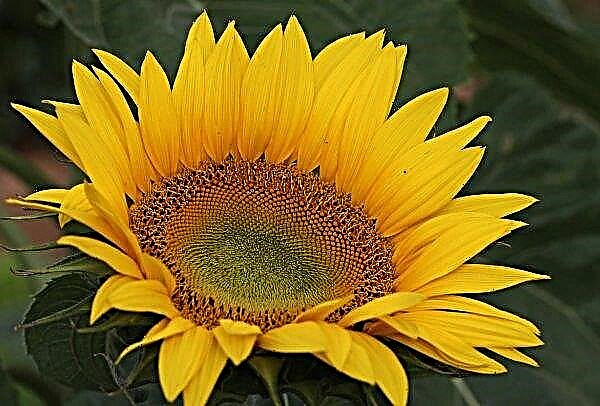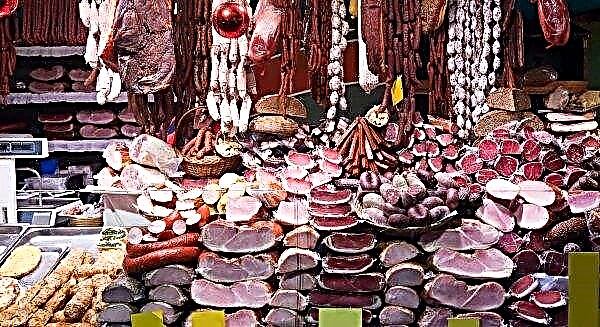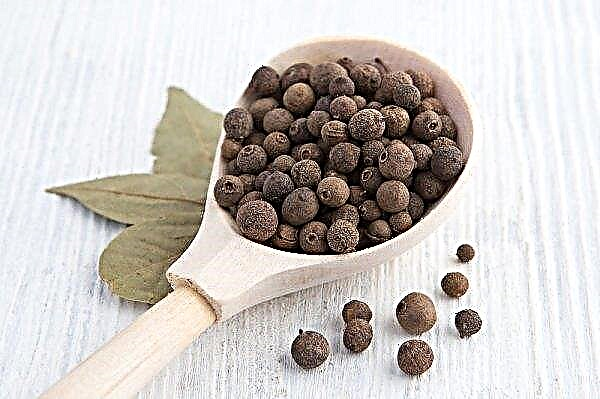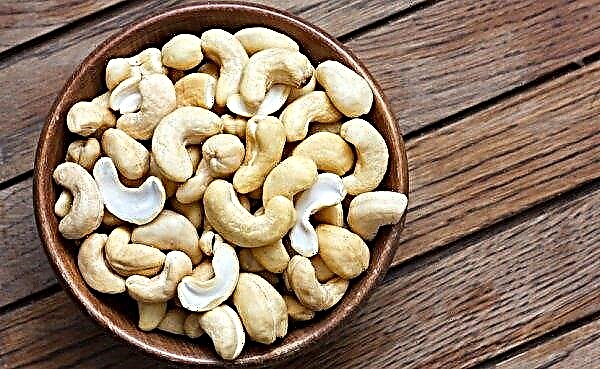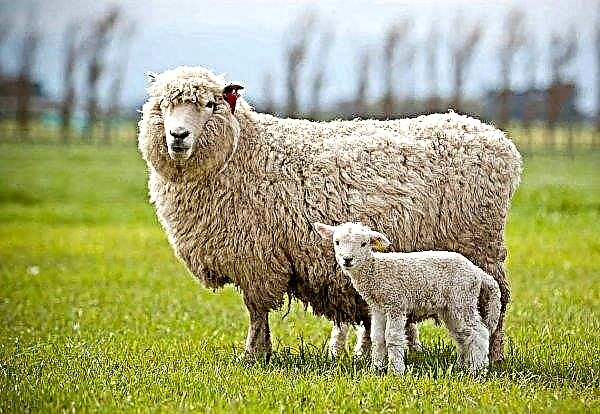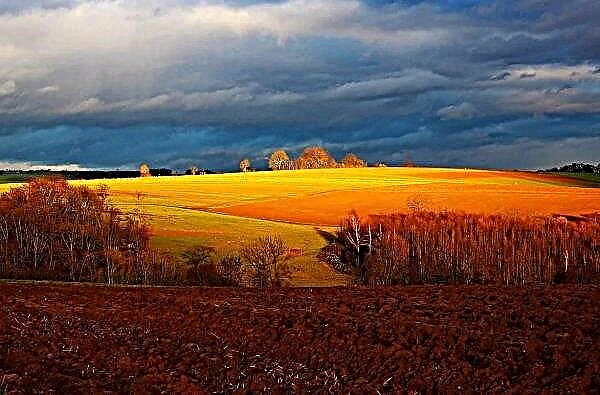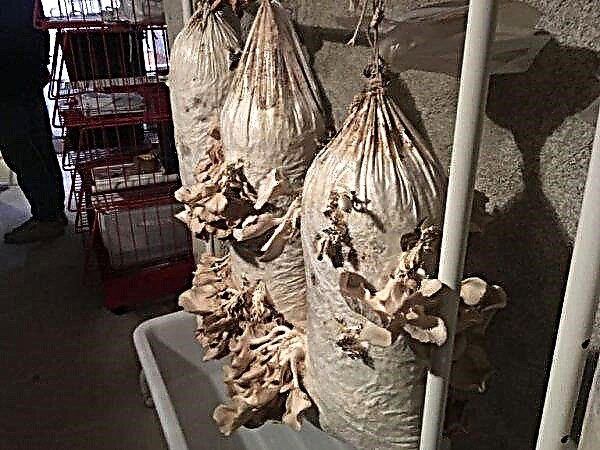Different varieties of hydrangeas are suitable for different territories of Russia, many of which can easily tolerate winter temperature drops and due to this they can be grown even in the northern regions of the country. Plants of the Sugar Rush variety also belong to such a group of flowers, the appearance of which will not leave indifferent any true connoisseur of flowering crops. What exactly is this remarkable variety and what you should know about the rules of planting and further care of seedlings on the site - this will be discussed in this article.
Botanical Description
Panicled Hydrangea Sugar Rush (Sugar Rush) is a lush flowering bush-like plant, in most cases with a snow-white color of buds and contrasting green foliage. The attractive appearance of the bush makes it a suitable option for landscaping any site, both in the conditions of the Central strip of the Russian Federation and in more northern regions.
Subject to all requirements for cultivation, even two- or three-year-old seedlings calmly tolerate winter temperature drops up to -30 ° C, without prejudice to shoots, foliage and buds. To verify the appropriateness of planting Sugar Rush plants on your site, you should carefully familiarize yourself with the appearance of these bushes.
Did you know? In Latin, the name of hydrangea sounds like “Hydrangea” and literally means “vessel with water”. Such a "name" went to the culture for a reason, because it really loves moisture.
Bush
Hydrangea Sugar Rush cannot be called a large representative of flowering crops - the height of an adult plant is not more than 0.8 m, and sometimes even less. If necessary, you can limit the growth with the help of forming pruning, relevant to control the growth in width, which is on average equal to the height of the hydrangea. The compact size of the representatives of Sugar Rush contributes to their cultivation even in small areas or in combination with other cultures for the organization of rockeries and rock gardens.
The compact size of the representatives of Sugar Rush contributes to their cultivation even in small areas or in combination with other cultures for the organization of rockeries and rock gardens.
Leaves and shoots
The main characteristics of the appearance of the branches of Sugar Rush hydrangea will be their vertical arrangement and brown bark; however, in young seedlings, its surface will be rather greenish. All branches are densely leafy, which has a very positive effect on the overall decorativeness of the bush. Its leaf plates are oval, pointed at the end and serrated at the edges (over the entire area).
Important! Leaf petiole - dense and relatively short, directs the leaves ends to the ground.
On their central part, longitudinal veins are clearly visible, the color of which is usually several tones lighter than that of the main part of the leaf. The pointed parts of the leaf practically do not “look up”, but are located in the horizontal direction only when there are no lush buds on the bush, mostly in young seedlings.
Inflorescences
The snow-white flowers of the Sugar Rush hydrangea cultivar are tightly collected in inflorescences with a diameter of about 15 cm and resemble an inverted glass in shape. They are all sterile, so pollination will not occur.
By the end of the summer season, the white color of the buds can change to a slightly pinkish, which only increases the decorativeness of the culture. Hydrangea bushes reach their peak of elegance during the period from July to September, since it was at this time that inflorescences blossomed and the plant seemed much more voluminous.
Important! In order to preserve the freshness of cut flowers of hydrangea for a long time, it is worth adding a few drops of lemon juice to a vase with water. This culture loves an acidic environment, however, if you overdo it with acidity, flower petals can change their color.
Growing Features
The process of growing hydrangea Sugar Rush cannot be called too difficult, because it is based on the same actions as the cultivation of other varieties of this flower.
First of all, it is worth paying attention to the question of choosing a suitable site for planting, as well as getting acquainted with the main features of the planting process, although it will not be superfluous to immediately learn about the preferences of the shrub in terms of care. Of course, each aspect of the activity of the grower will have its own characteristics that are characteristic of a particular flowering culture.
Landing rules
Choosing the optimal hydrangea growing location is the first task of the grower before planting the purchased seedling. Sugar Rush plants do not tolerate prolonged shading, so the best place for them is the sunny side of the site, with well-drained and moist soil.
As for the suitable composition of the substrate, for the described plant it will be a mixture of humus, leafy soil, peat chips and river sand mixed in a ratio of 2: 2: 1: 1. Regardless of the varietal and species variety of hydrangea, lime should not be in the soil, otherwise the seedling will quickly die.Important! It is better to close the rhizome into the ground in several stages, each time slightly shaking the young plant to better distribute the soil between the individual roots. All of them should be well pressed to the ground so that voids do not form.

The hydrangea planting process consists of several sequential actions:
- First you need to dig a hole at least 40 cm in depth and 50 cm in diameter (for small seedlings, these values can be adjusted downwards).
- Then well water the hole and fill it with a nutritious soil mixture prepared from the above components (the soil cushion should reach half of the recess).
- On the hill of soil, place the selected hydrangea seedling, only so that it is in the center of the hole. Spread its roots and make sure that the root neck is not below ground level, it can not be filled up.
- Fill the roots of the seedlings with the remaining soil, slightly compact the soil and water again well, if necessary, mulch the surface of the beds with sawdust or straw, which will allow you to save moisture at the root system of plants for a long time.

How to care
When caring for hydrangea Sugar Rush, it is necessary to pay increased attention to hydration, since with prolonged drought, one should not rely on the lush flowering of the crop. With moderate natural precipitation at the beginning of cultivation, it is advisable to water the bushes 1-2 times a week, while focusing on the state of the upper soil layer (the earth should always be slightly moist).
It is better to moisturize hydrangeas in the morning or evening hours, so that moisture does not evaporate under the influence of sunlight. As soon as the water is completely absorbed, it is possible to loosen the substrate, thereby providing a better flow of air to the root system of the plant. On an adult bush, on average, they consume at least 1 bucket of water, but if the earth in the near-stem circle is very dry, you will have to pour two or even three buckets of liquid settled in the sun.
On an adult bush, on average, they consume at least 1 bucket of water, but if the earth in the near-stem circle is very dry, you will have to pour two or even three buckets of liquid settled in the sun.
The second important aspect when growing hydrangeas of the described variety is the timely feeding of flowers. As nutrient mixtures, both organic (for example, liquid manure) and ready-made mineral mixtures for flowering crops, alternating between each other, can be used. The first top dressing of the season is usually carried out in mid-April, pouring shrubs with slurry previously diluted in water at the rate of 1 part of fertilizer per 10 parts of water.
At the beginning of summer and closer to autumn, it is worth planting phosphorus-potassium compounds into the soil by simply mixing the granules with the earth in the near-stem zone of the plant. It will be nice to combine the next fertilizer with the planned watering, since the liquid will only contribute to a better distribution of nutrients in the thickness of the substrate.
Despite the high frost resistance of Sugar Rash plants, in the northern regions of the country, young seedlings in the first few years after planting will need winter shelter. In the simplest version, the bush is simply covered with earth, fallen leaves and sawdust, sprinkling them as close to the stem as possible.
 It is advisable to bend older plants to the ground, cover them with roofing material or lutrasil, and so that the wind does not blow material from the beds, it is worthwhile to attach it around the perimeter with bricks.
It is advisable to bend older plants to the ground, cover them with roofing material or lutrasil, and so that the wind does not blow material from the beds, it is worthwhile to attach it around the perimeter with bricks.
If the winter temperatures in the region stably fall below -35 ° C, and the shrub is planted on the windy side of the site, you may need a frame shelter, on top of which a snow layer will further be placed, additionally warming the plant in winter.
In general, cultivation of hydrangea cultivar Sugar Rush should not cause significant trouble, even for beginner gardeners. Given the requirements of culture at each individual stage of its growth and development, you will surely get a good result of your work in the form of lushly blooming, highly decorative hydrangea.


